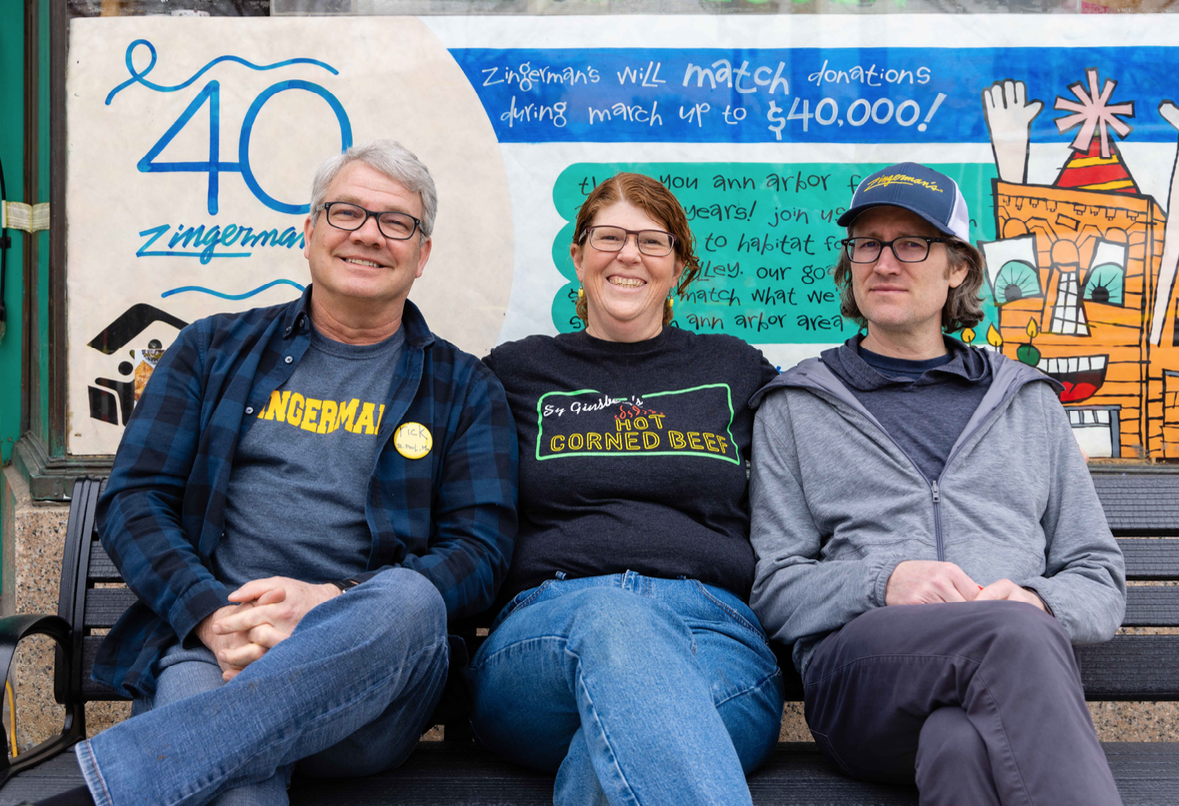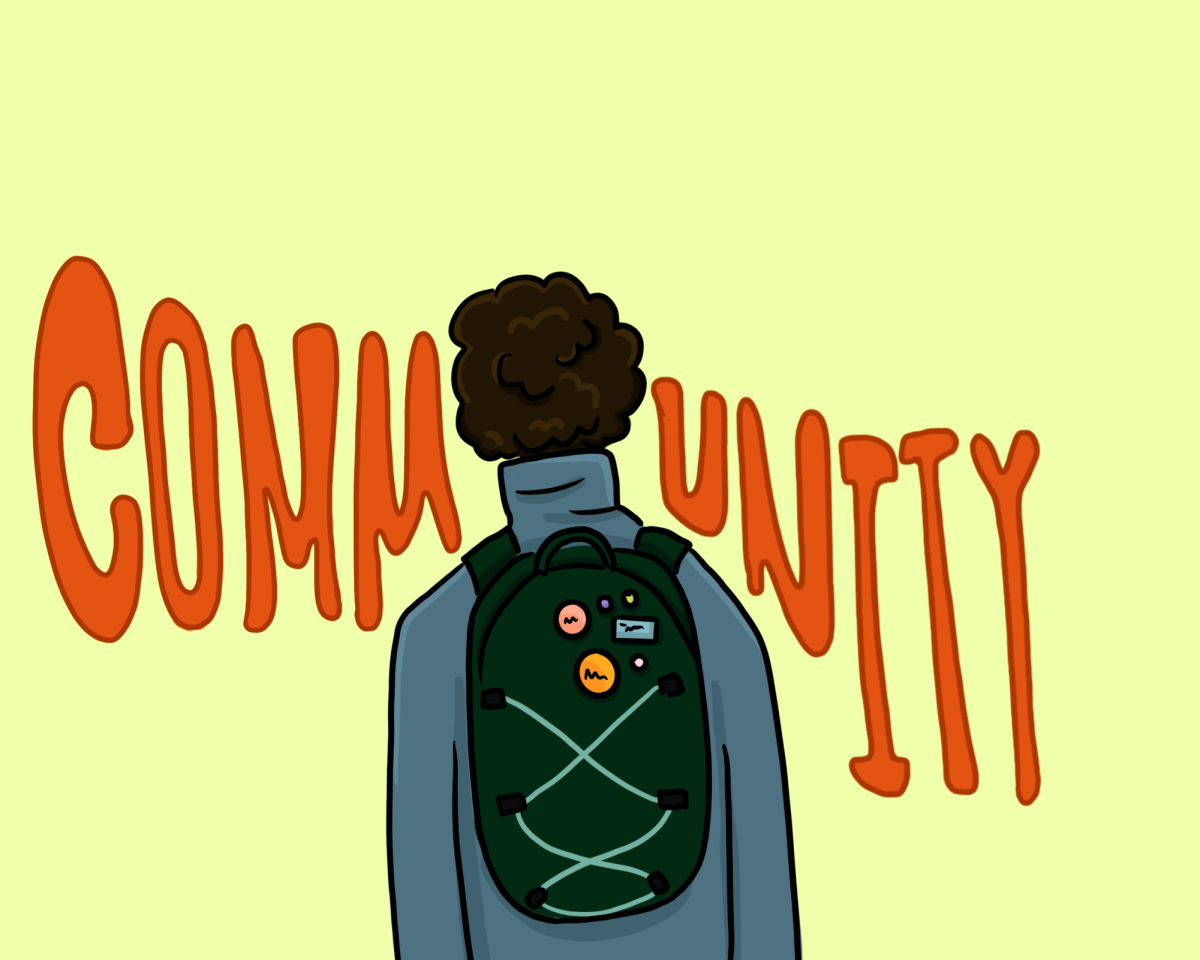On the corner of Detroit Street and Kingsley Street sit an assortment of colorful houses known as Zingerman’s. The property serves as the origin and main base for what has become a renowned “community of businesses,” which includes the original deli, the Next Door Café, the Bakehouse and the Candy Manufactory. Each business not at the main downtown location, with the exception of the Greyline event space, is owned separately, with their owners sitting on a managing body similar to a board for Zingerman’s.
Zingerman’s signature sandwiches began with meat from Sy Ginsberg and continue to feature his products even after his business was acquired by Grobbel Meats of Detroit. In the early days of the delicatessen, Ginsberg would deliver the meat himself, creating a long-lasting bond with the Deli.
Next comes the produce, which is usually sourced locally, sometimes even from the Ann Arbor farmers market. The sandwich ingredients that are derived from the produce are all made in Zingerman’s kitchen, with the exception of the pesto imported from Italy. The sandwiches are then assembled to order using the ingredients that the kitchen had made earlier.
Not only are Zingerman’s ingredients sourced locally, but they are also served locally. All Zingerman’s “brick-and-mortar” businesses are located in Washtenaw County, the furthest out being an event space on a farm in Dexter, MI.
“Being local has been part of the vision of the organization from the very beginning,” said Jennifer Santi, the marketing and communications manager for Zingerman’s Delicatessen. “Lots of people approached Paul and Ari as the business was growing and said, ‘Oh, I love your sandwiches so much. Can you open up here? Can you open up there,’ and they really felt that in order to preserve the quality of the food, the relationships we have with our vendors, and to really keep the experience very unique, they decided on a growth model that would include staying local.”
The only way to experience Zingerman’s nationwide is via wholesale, typically with products that have a longer shelf life, such as coffee and candy.
As a result of staying local, comes the Zingerman’s Experience.
“The Zingerman’s Experience is for somebody to have a really great experience where they’re experiencing kind of the joy and the love of our food and that our staff are giving them great service, that they’re having fun while they’re here,” Santi said. “We bring love to every interaction we have with people, we serve them great food, and that we really want to be the best part of their day.”
Zingerman’s also contributes to the community more than as a vendor of food. Zingerman’s donates to many nonprofits either with time and expertise or with money. This expertise can range from business and legal advice to planning skills. Their first major nonprofit venture was Food Gatherers, a local food bank.
“Food Gatherers started in our early days with a recognition that there was a need for help with food in the community and that we are a food business,” Santi said. “We sometimes have extra food that we cannot sell, but it’s still good to eat and that we could maybe feed the people in the community with that food.”
CHS also recognized this need in 2009, which led to the partnership formed between the school and Food Gatherers in the form of an annual fundraiser each November. This was also to counteract the large amounts of waste generated by pre-Thanksgiving celebrations at the school.
The iconic Zingerman’s font and drawing style also came from a local source: Steve Muno, a staff member who worked behind the meat and cheese counter towards the beginning of Zingerman’s existence.
The designs began as doodles on butcher paper in his spare time, and now drawings in his style cover the walls and products found at Zingerman’s. The font, called “Muno” after their creator, can now be used by Zingerman’s on the computer in their graphic design suite.
The designated illustrator, Ian Nagy, is tasked with the overall designs for each Zingerman’s brand. Nick Jaroch, the official sign paint-er, is responsible for the murals and physical art installations in the deli- catessen complex.
Many Zingerman’s recipes have remained the same throughout the years, with slight modifications. One such modification is swapping out ingredients for more local counterparts, which is the case for the sauerkraut. The bakehouse sources grain from Michigan and the midwest. Overall, Zingerman’s strives to remain local.










